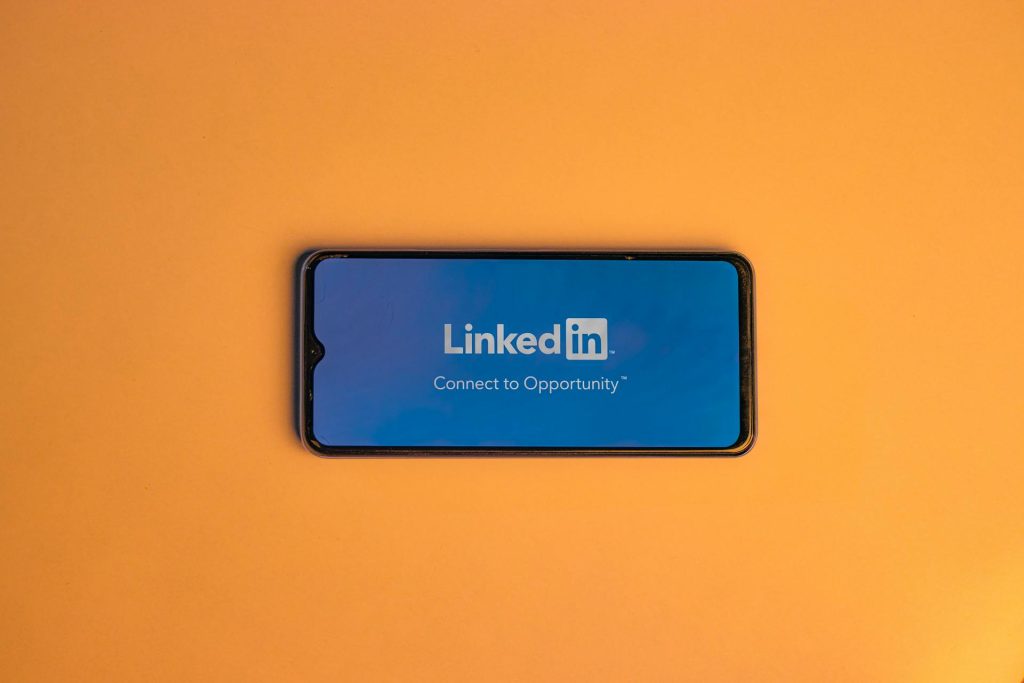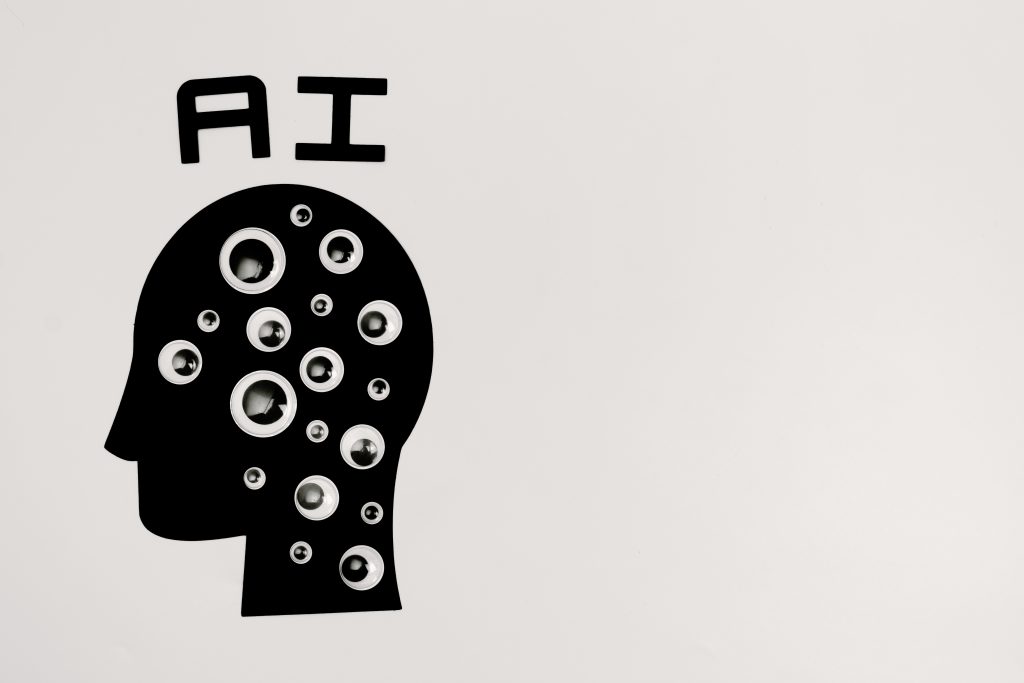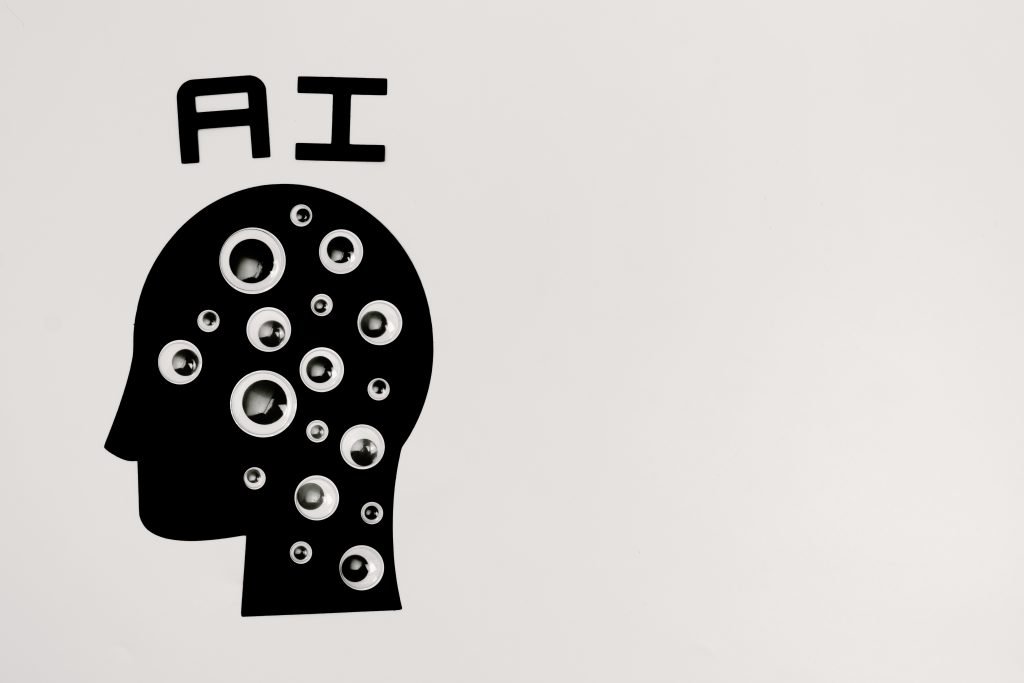INCORPORATE LINKEDIN INTO YOUR MARKETING STRATEGY

LinkedIn has over 774 million users worldwide. This makes it one of the top-used social media platforms. Yet underutilised. However, a number of businesses have identified the importance of incorporating LinkedIn into their marketing strategy to build awareness, connections, networks, and revenue. It is a powerful tool, yet only a few people utilise its marketing power for their brands. What Is Linkedin Marketing? For many successful marketing strategies today, LinkedIn plays a very pivotal role. The process of using LinkedIn to make connections, generate leads, improve brand awareness, and foster business relationships and partnerships while also driving traffic to your website is known as LinkedIn marketing. It is now a part of digital marketing, just like Facebook, Instagram or Twitter. LinkedIn isn’t used as a socialisation tool alone but as a tool to market brands to the online world while increasing revenue for that brand. Instead of being intimidated by people’s successful growth, promotions, and completed courses, you can use it to reach your target audience and build brand awareness. Why Do You Need Linkedin Marketing? Regarding social media marketing, what comes to mind first is Facebook, Instagram and Twitter, the most common social media platforms used, which are all good in social media marketing. However, leaving LinkedIn out of your strategy is a way of harming your business. As a professional platform, LinkedIn generates leads 227% more effectively than Facebook and Twitter combined. Here are some benefits of LinkedIn marketing to businesses: Connect To The Right Target AudienceJust like every other social media platform, LinkedIn is also a great way to connect to the right people for your business.Many businesses use LinkedIn, making the platform fit for B2B connections. This is unique because other platforms can’t offer that. With over 700 million professionals, LinkedIn provides access to a niche audience actively engaged in professional pursuits. This extensive network comprises diverse industries, job roles, and expertise levels, creating a niche audience of individuals actively engaged in professional endeavours. For businesses, this means having direct access to decision-makers, industry leaders, and potential collaborators keen on networking, sharing insights, and exploring business opportunities. The platform’s user base facilitates targeted outreach, allowing businesses to tailor their messages to specific professional segments and engage with a relevant and receptive audience. In simple terms, you get to cut through the noise and focus on connections that are of more value to your business. Brand Credibility and AwarenessThe text you have written is well-drafted and reflects the importance of a robust LinkedIn presence for enhancing brand credibility and awareness. A strong LinkedIn profile showcases a business’s commitment to professionalism and industry expertise. It is a digital business card that communicates a brand’s dedication to maintaining a professional image. Differentiating your business from competitors is crucial, and a brand’s core values, mission statement, and business goals play a vital role in achieving this. A well-crafted LinkedIn profile can help businesses showcase their expertise, achievements, and contributions to the industry, enhancing brand credibility and instilling trust among potential clients, partners, and collaborators. In today’s competitive business landscape, a strong LinkedIn presence has become a powerful tool for reinforcing a brand’s credibility and establishing itself as a reputable player in the market. Regular updates, thoughtful engagement, and transparency are key to building a strong LinkedIn presence that enhances brand visibility and awareness. Thought LeadershipDemonstrating thought leadership on LinkedIn can be highly effective for individuals and companies. With a focus on businesses and careers, LinkedIn provides an ideal platform to showcase credentials such as university degrees, professional certifications, and company awards. These credentials can help establish a reputation as a thought leader in a particular field or industry. Individuals and companies can enhance their thought leadership reputation by posting valuable content and comments on the platform. For instance, a logistics company can post an FAQ video featuring its CEO answering common questions related to the field. This kind of content can solidify the company’s reputation as an expert in the industry. Lead Generation LinkedIn serves as a goldmine for lead generation, offering a platform where businesses can connect with decision-makers and potential clients. LinkedIn’s unique position as a professional networking platform transforms it into a goldmine for lead generation. The platform’s user base comprises professionals in various roles, including decision-makers and key influencers within organisations. This provides businesses with a direct avenue to connect with individuals who hold the power to make decisions or influence purchasing choices. Businesses can generate quality leads by strategically engaging with targeted professionals, sharing valuable content, and participating in industry discussions. The ability to nurture relationships within a professional context on LinkedIn enhances the likelihood of converting leads into valuable clients or collaborators. LinkedIn Marketing Best PracticesHere are some tips to help you get the best out of LinkedIn for Marketing Optimise Your Profile: Your LinkedIn profile is your digital storefront. Craft a compelling company profile with a clear logo, concise yet impactful description, and links to your website. This ensures your brand is easily discoverable, reflecting professionalism and a commitment to transparency. Engaging Content Strategy: Keep your audience captivated with a dynamic content strategy. Share regular company updates, milestones, and behind-the-scenes glimpses. Blend these updates with valuable industry insights, utilising multimedia content like images, videos, and infographics for variety and visual appeal. Establish your business as a go-to source of information within your industry. Utilise LinkedIn Ads: Leverage LinkedIn’s advertising features for precise targeting. Reach specific demographics, industries, or job titles aligned with your business objectives. Craft compelling ad campaigns showcasing your offerings, promotions, or key messages. Elevate your brand’s visibility and drive engagement by ensuring your advertisements reach the most relevant and receptive audience. Engage in Groups: Actively participate in relevant LinkedIn groups within your industry. Connect with professionals, share insights, and contribute to discussions. This strategic involvement expands your network, positions your business as an active participant, and fosters relationships, building credibility within your industry community. Regular Updates: Consistency is key to a visible and active LinkedIn presence. Regularly update your
Influencer Marketing in 2024: Trends, Strategies, and Success Secrets

The term “influencer marketing” has been all the rage in the marketing industry for a few years, and its acceptance is growing. The days of running one-size-fits-all ads and pursuing vanity metrics are long gone. Influencer marketing will become an even more potent tool for brands in 2024, given the constantly changing social media landscape and the growing mistrust of traditional advertising. 90% of survey respondents believe influencer marketing to be an effective form of marketing. 67% of brands use Instagram for influencer marketing. However, precisely what is influencer marketing? Influencer marketing is collaborating with people in charge of online communities (influencers) to market your company or goods to their audience. These influencers can range in popularity from micro-influencers in specific niches with devoted, active communities to social media celebrities with millions of followers. How Does it Work? Building Trust and Engagement Effective influencer marketing goes beyond mere endorsements. It’s about leveraging the influencer’s credibility and authenticity to build trust and positive brand associations with their audience. This can be achieved through Creative Content Collaboration: Influencers excel at creatively weaving brand messaging into their content, ensuring a seamless and engaging fusion. This strategy allows for relatability and resonance as influencers authentically express brand values, effectively communicating with a broader audience. Community Building and Advocacy: Influencers go beyond content creation to become brand ambassadors, fostering genuine connections and driving conversations within their communities. By building trust and advocating authentically, influencers create a sense of belonging that enhances the impact of brand messages. Long-Term Partnerships: Moving beyond one-off campaigns, brands cultivate lasting relationships with influencers, ensuring consistent messaging and deeper audience engagement. Sustained collaborations transform influencers into trusted partners, contributing authentically to the brand narrative over time. Long-term partnerships lay the groundwork for genuine and impactful storytelling. Why Is Influencer Marketing Thriving? Cutting Through the Clutter: Influencer marketing thrives by cutting through the clutter of traditional advertising. In a world bombarded by ads, consumers find solace in recommendations from authentic voices they resonate with. As trusted figures, influencers bring credibility to brand messages, fostering a connection that transcends the scepticism often associated with traditional marketing. Hyper-Targeted Reach: One of the key drivers of influencer marketing’s success is its ability to offer hyper-targeted reach. Influencers operate within specific niche communities, allowing brands to access their ideal customers directly. This targeted approach ensures that brand messages resonate with the right audience, creating a more meaningful impact and increasing the likelihood of conversion. Measurable Results: Influencer marketing stands out due to its measurable results. Unlike some traditional marketing approaches, influencer campaigns are backed by advanced analytics that go beyond vanity metrics. Brands can track performance metrics, gaining valuable insights into engagement, reach, and return on investment (ROI). This data-driven approach allows for continuous refinement and optimisation, making influencer marketing a strategic and results-oriented choice for brands. Trends In Influencer Marketing The Rise of Micro-InfluencersOne of the biggest trends in influencer marketing in 2024 is the rise of micro-influencers. These influencers have smaller followings, typically between 10,000 and 50,000 followers. While they may not have the reach of a megastar influencer, micro-influencers often have higher engagement rates with their audience and are seen as more relatable and trustworthy. This is because micro-influencers specialise in a particular niche or area of interest. This allows them to build a loyal following of people who are genuinely interested in what they have to say. When a micro-influencer promotes a product to their audience, it’s seen as a recommendation from a friend or trusted expert rather than a paid endorsement from a celebrity who may not even use the product themselves. The Power of Niche CommunitiesAnother trend driving the growth of influencer marketing is the increasing importance of niche communities. In today’s crowded online world, consumers seek brands that speak to their interests and needs. Niche communities allow brands to connect with these consumers more personally. Influencers active in niche communities can be incredibly valuable brand partners. They can help brands to develop products and marketing campaigns that resonate with their target audience. They can also help brands reach new customers who need to be made aware of their brand. The Future of Influence As we look ahead, it is clear that influencer marketing is here to stay. Brands still need to start using influencer marketing to take advantage of a powerful opportunity to reach new customers and build brand loyalty. However, it is important to remember that influencer marketing is not a silver bullet. To succeed, brands must develop a strategic approach to influencer marketing aligned with their overall marketing goals. Here are a few tips for brands that are considering using influencer marketing in 2024: Focus on micro-influencers and niche communities. Develop authentic relationships with influencers. Go beyond promotions and engage in meaningful conversations with the influencer’s audience to foster lasting brand loyalty. Create content that is relevant and engaging. Explore emerging platforms like TikTok and live streaming to tap into new audiences and content formats. Track your results and measure your ROI. Influencer marketing is not a fad but an evolving force in the digital landscape. By understanding its intricacies, embracing new trends, and aligning it with your broader digital strategy, you can unlock its true potential to build meaningful connections, drive engagement, and achieve sustainable success in online marketing.
Revolutionising Marketing: The Advent of AI-Powered Strategies

In recent years, the digital marketing landscape has dramatically transformed with the emergence of Artificial Intelligence (AI). Integrating AI into marketing strategies has revolutionised how brands connect with their audience, analyse data, and make data-driven decisions. In this blog, we’ll embark on an exciting journey to explore the advent of AI in marketing and its profound impact on the industry. 1. Personalisation and Customer ExperienceThanks to AI, every customer feels like a VIP! Thanks to AI, that world is becoming a reality. AI-powered algorithms delve into vast amounts of data, giving marketers a deep understanding of customer behaviour, preferences, and purchase history. Brands can create tailored content and targeted advertisements that cater to individual needs. 2. Predictive AnalyticsSay goodbye to guesswork and hello to strategic precision! AI’s predictive capabilities empower marketers to foresee consumer trends and preferences accurately. By analysing historical data and patterns, AI forecasts future market trends, enabling brands to proactively strategise and adapt to changing consumer demands. This data-driven approach keeps businesses ahead of the competition, leading to more informed decisions and enhanced return on investment. 3. Enhanced Content CreationWelcome to the era of content creation made effortless! AI-driven tools have transformed how marketers craft engaging and compelling content. Natural Language Generation (NLG) and AI-powered copywriting tools generate captivating product descriptions, blog posts, social media content, and personalised email campaigns. With AI’s helping hand, marketers save time and ensure content consistency, allowing creativity to flourish. 4. Chatbots and Customer SupportMeet your customers’ new best friends – AI-powered chatbots! These virtual assistants work around the clock, responding instantly to customer queries and delivering seamless user experiences. By automating routine inquiries, chatbots free up human resources to focus on more complex tasks, optimising operational efficiency. Businesses can now build lasting relationships with customers, boosting retention and trust. 5. Optimal Ad Targeting and OptimisationUnlock the art of precision targeting with AI! Machine learning algorithms analyse user behaviour and engagement patterns, allowing marketers to identify the most suitable audience segments for specific ad campaigns. This unparalleled targeting ensures that ads reach the right people at the right time, resulting in maximum ad performance and cost efficiency. ConclusionThe advent of AI in marketing has undeniably reshaped the industry, empowering marketers with powerful tools to create more personalised, data-driven, and practical strategies. From personalised customer experiences to predictive analytics, AI’s impact has been profound, and its potential continues to shape the future of marketing. In this rapidly evolving digital era, businesses must wholeheartedly embrace the transformative force of AI to maintain their competitiveness. By harnessing AI-powered marketing strategies, brands can forge deep connections with their audience, driving substantial business growth and securing a leading position in the dynamic and ever-changing digital marketing landscape. AI is the beacon that guides marketers into a future of unparalleled possibilities and extraordinary success. Embrace the revolution, and let AI empower your marketing endeavours like never before! Lead the digital business world with our robust and practical digital marketing strategies. You cannot get it wrong with Raven and Macaw; from SEO, Social media strategies, content creation and marketing, Paid ads and excellent customer experience, we got it all!
Digital Marketing Analytics: Measuring the Success of Your Campaigns

Digital Marketing Analytics: Measuring the Success of Your Campaigns Creating a campaign is like making music; if the audience loves you, you will know, but not all successful music has the numbers you expect it to have. This is not an article on writing a successful campaign but how to measure it. Buckle up because we’re about to decode the secrets of measuring campaign success with the finesse of a social media ninja. Why Analytics, You Ask? First things first, why should we care about digital marketing analytics? Well, imagine you’re baking a cake. Analytics is like checking the oven to ensure your masterpiece cooks just right. It tells you what’s working, what’s not, and how to whip up an even better cake next time. In our world, the cake is your digital campaign, and the oven is, you guessed it, analytics. Numbers Speak Louder Than Words Analytics is not just about drowning in data; it’s about finding the story those numbers are itching to tell. Think of it as your digital campaign’s diary, spilt with insights on who’s digging your content, when they’re doing it, and what makes them click that magic ‘Buy Now’ button. Demystifying the Jargon Hold up, though! Analytics comes with fancy terms: CTR, CPC, ROAS. It’s like cracking a secret code, but fear not, fellow digital navigators! Click-through rate (CTR) measures how many folks click on your ad, Cost Per Click (CPC) is the price tag for each click, and Return on Ad Spend (ROAS) calculates the bang for your buck. Social Media Savvy Let’s talk socials, where all the cool cats hang out. Analytics helps you decode which posts are rocking the party, who’s RSVPing to your events, and when your audience wants to groove. Social media without analytics is like pizza without cheese—just not as satisfying. Google’s Playground Ever heard of SEO? It’s like being the cool kid on Google’s playground. Analytics here tells you if your website is getting the attention it deserves. Are you ranking high, or are you lost in the digital abyss? With analytics, you’ll know where you stand and how to climb those search engine slides. A/B Testing Awesomeness Now, let’s spice things up with A/B testing. It’s the digital version of trying on two outfits and picking the one with the most compliments. With analytics, you can test different ad copies, visuals, or emojis to see what clicks with your audience. Who knew testing could be this fun? Closing Thoughts: Stay Data-Curious! In the digital jungle, analytics is your compass. It guides you through the terrain of trends, clicks, and conversions. So, fellow digital explorers, let’s stay data-curious, embrace the analytics adventure, and turn our campaigns into digital masterpieces! We have over four years of experience; we know this stuff. Drop us a message here, and let’s craft campaigns that make noise and hit all the right notes in the digital symphony!
The Power of AI and ML in Digital Marketing

The Power of AI and ML in Digital Marketing Artificial intelligence (AI) and machine learning (ML) are rapidly transforming the digital marketing landscape. Now, with these technologies, computing data, automating tasks, and efficiency improvement have become markers of the cool kids in the industry. Marketers quickly realise the power of AI and Machine learning in their everyday tasks. These technologies enable marketers to gain deeper insights into customer behaviour, create personalised experiences, and automate routine tasks with zero stress. Utilising AI and ML in Digital Marketing Strategies Data analysis and insights Artificial intelligence (AI) and machine learning (ML) algorithms have revolutionized marketing by swiftly analyzing vast datasets. This lets marketers gain deep insights into customer behavior, including preferences, purchase history, and online interactions. AI excels at segmenting customers, identifying nuanced segments based on unique interests and behaviors, and allowing for precise targeting and personalized messaging. Additionally, these technologies predict customer churn by analyzing historical data, empowering marketers to engage at-risk customers proactively, and enhancing loyalty and retention efforts. AI and ML have transformed marketing, providing speed, efficiency, and personalization to customer engagement strategies. Personalisation To personalize the marketing experience for each customer, these technologies have algorithms that analyze vast amounts of customer data to identify patterns and segment customers into distinct groups based on demographics, behaviors, preferences, and purchase history. This helps businesses tailor their product to a suitable customer base. In addition, chatbots and virtual assistants provide real-time, personalized assistance, enhancing customer satisfaction. Predictive analytics anticipate customer behavior, enabling proactive support and retention strategies. Automation Automation has become a common word used by marketers today. It refers to utilizing technology to ease the work process. With automation, you can schedule social media posts, blogs, keyword bidding, etc. This automation frees marketers to concentrate on strategic activities like creating engaging campaigns and nurturing customer relationships. It streamlines processes, maximizes efficiency, and provides valuable data insights, ushering in a new era of innovation in marketing. Social Media Targeting These technologies utilize a wealth of data, including demographic information, interests, and online behavior, to identify individuals most likely interested in a product or service, enabling precise audience targeting. By harnessing AI-driven algorithms, businesses can ensure their ads reach the right people at the right time, resulting in more effective campaigns and improved ROI. This level of precision allows for highly customized advertising strategies that resonate with specific consumer segments, ultimately boosting engagement and conversion rates. Content Marketing AI and ML have elevated content marketing to new heights by enabling the creation and distribution of highly personalized content. For instance, AI-powered algorithms can analyze vast datasets to craft individualized blog posts, email newsletters, or product recommendations tailored to each customer’s unique preferences and behaviors. This not only enhances the user experience but also strengthens brand-customer relationships. Furthermore, AI can automate content distribution, ensuring that the right content reaches the right audience through various channels, boosting visibility and engagement while saving time and resources. Search Engine Optimization (SEO) In SEO, AI and ML algorithms are powerful tools for optimizing website performance. These technologies excel at identifying relevant keywords and optimizing website content accordingly. They can analyze search trends, user behavior, and competitors’ strategies to determine the most effective SEO approaches. AI-driven SEO tools also help structure website content, improve load times, and enhance mobile optimization, critical factors in achieving higher search engine rankings and attracting organic traffic. Customer Relationship Management (CRM) A good customer relationship is significant if you aim to retain happy and loyal customers for your brand. Artificial intelligence and machine learning are reshaping the landscape of customer relationship management systems. One significant application is predictive analytics, where AI algorithms analyze historical customer data to predict behaviors such as churn. Businesses can proactively engage and retain customers through personalized offers or communication by identifying customers at risk of churning. Moreover, AI-driven chatbots and virtual assistants enhance customer support by providing quick and accurate responses to inquiries, improving overall customer satisfaction. These technologies enable businesses to build loyal customer bases and drive long-term success. Artificial intelligence and machine learning are still in their early stages of adoption in digital marketing. Still, they have the potential to revolutionize the way that marketers reach and engage with their customers. We expect to see even more innovative and groundbreaking applications emerge as AI and ML technologies develop. With technology, businesses can generate more customers and traffic and make more sales while making their work more efficient and promoting scalable profitability.
